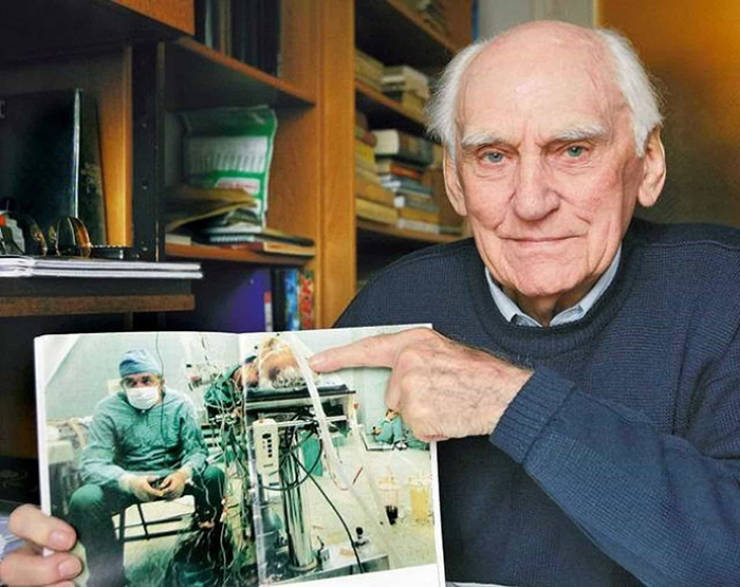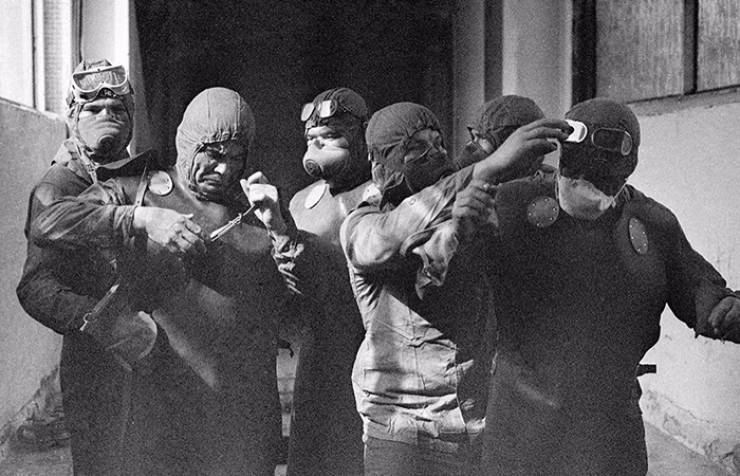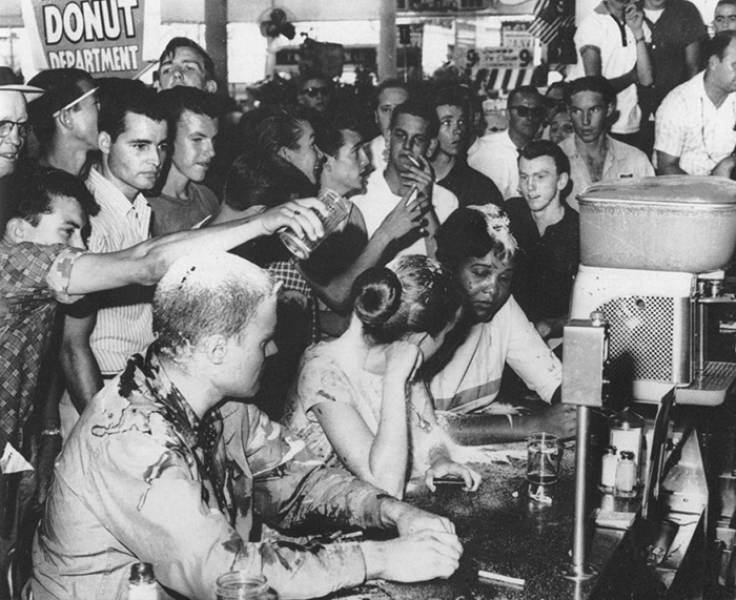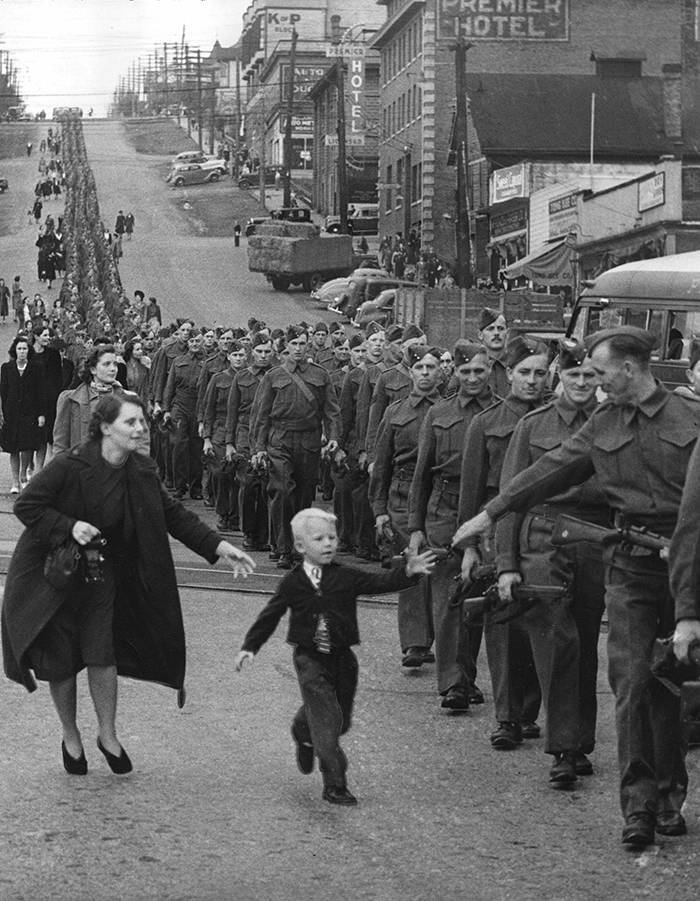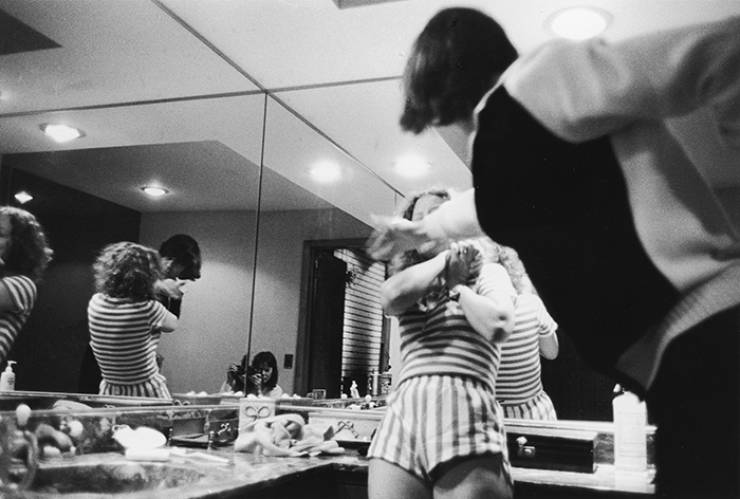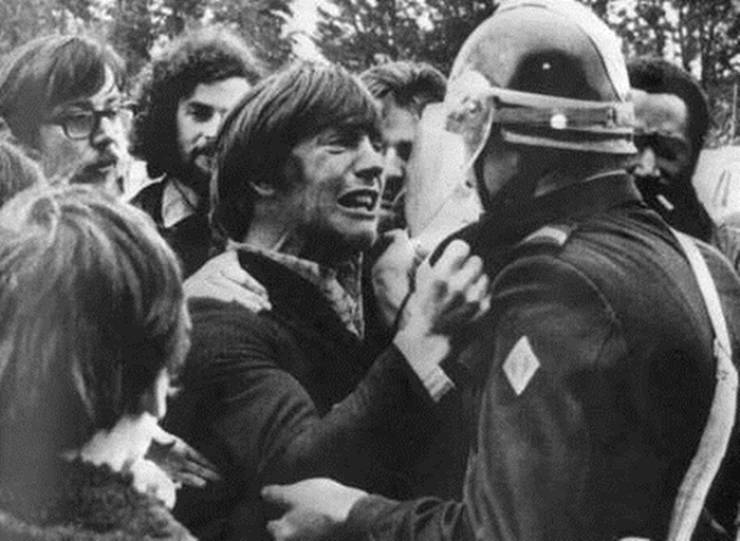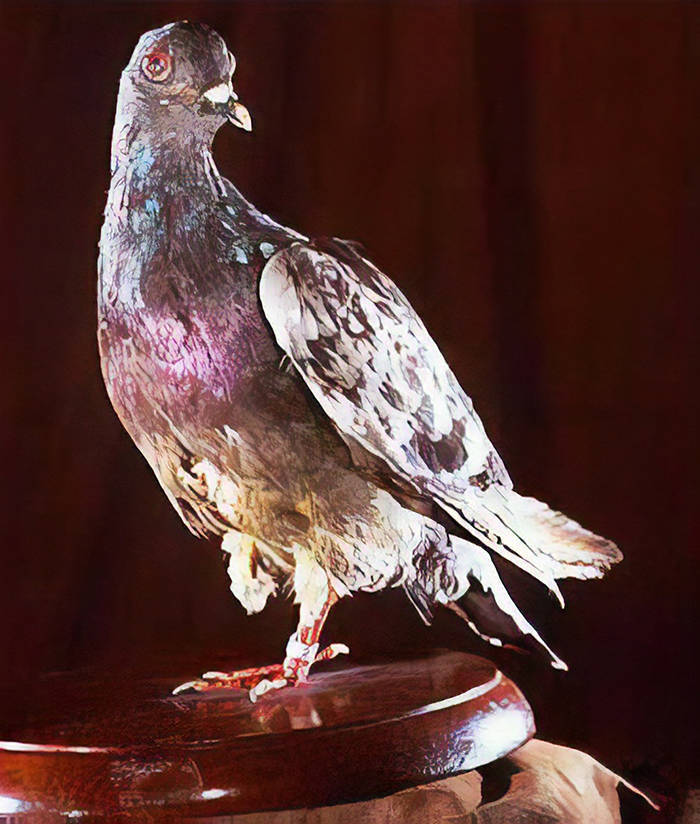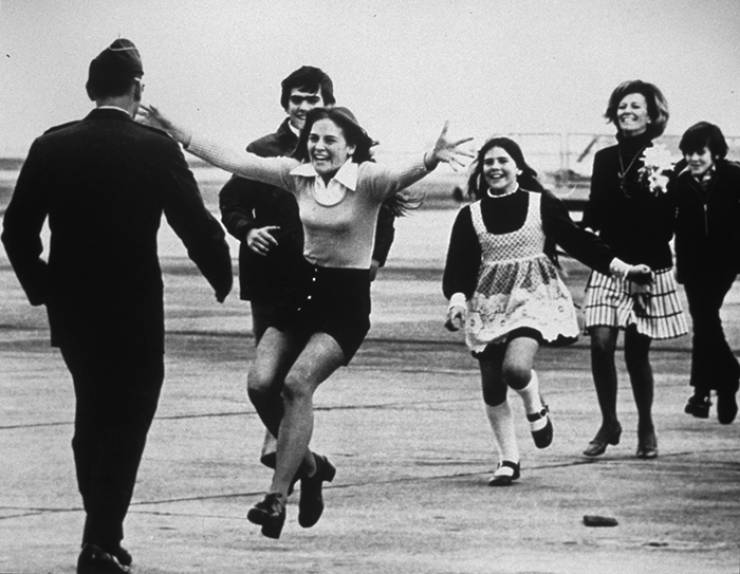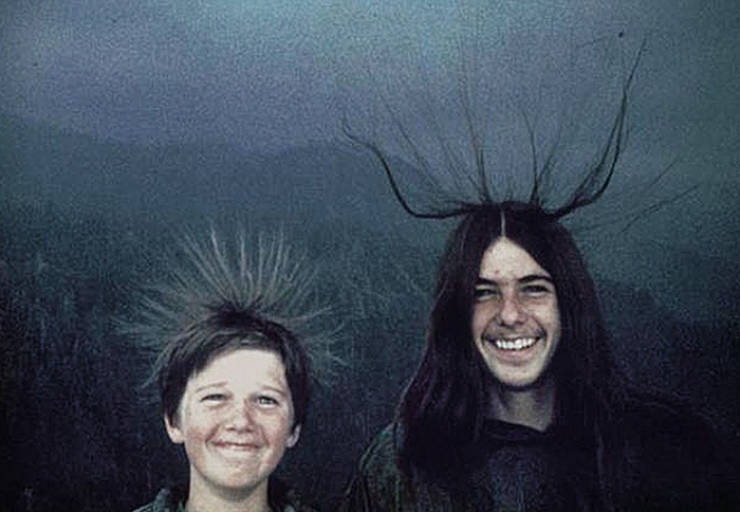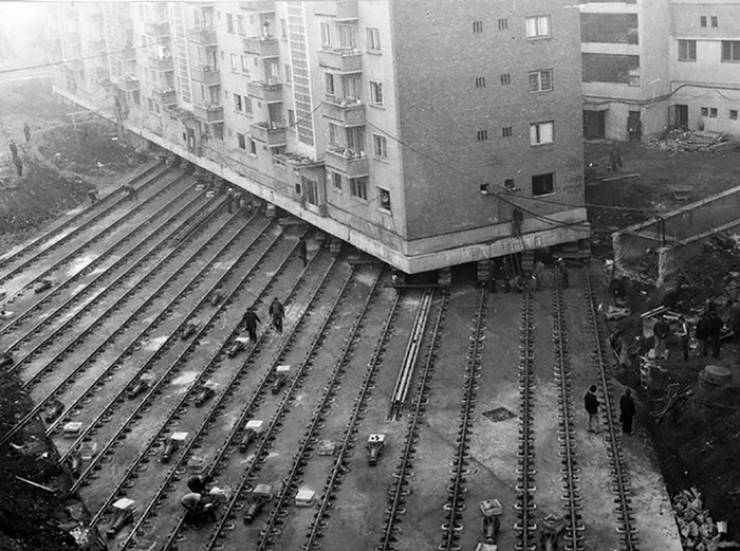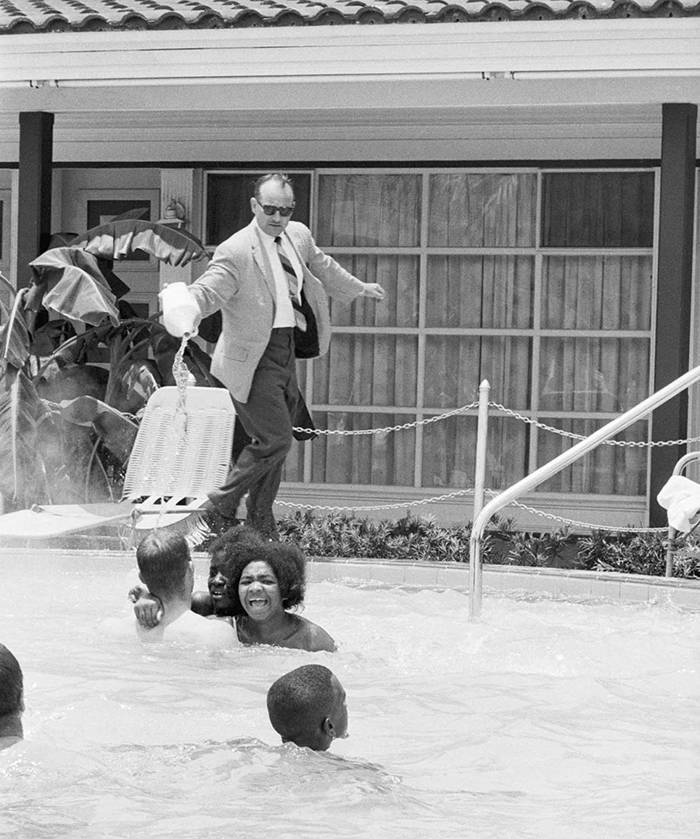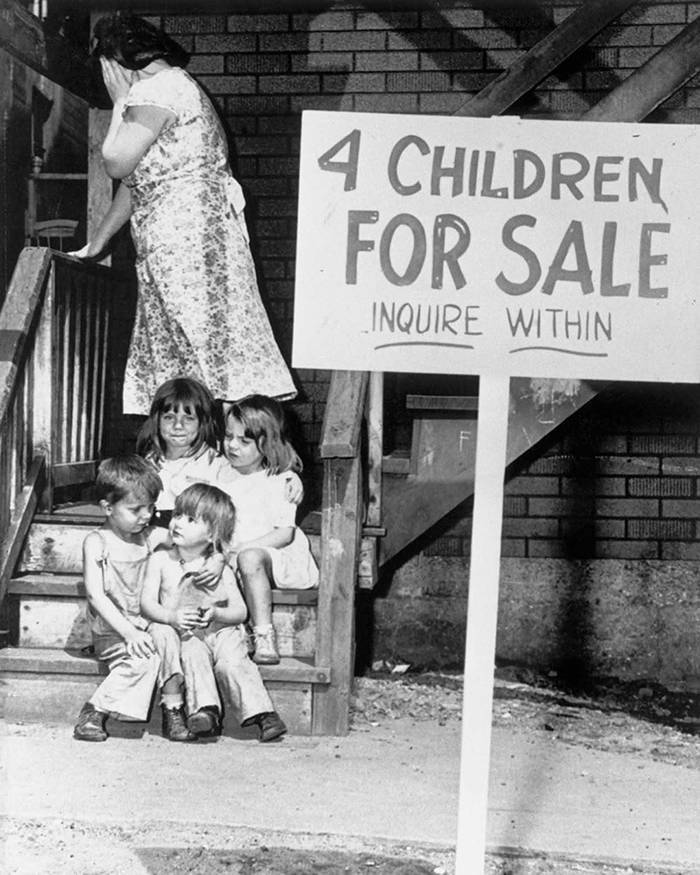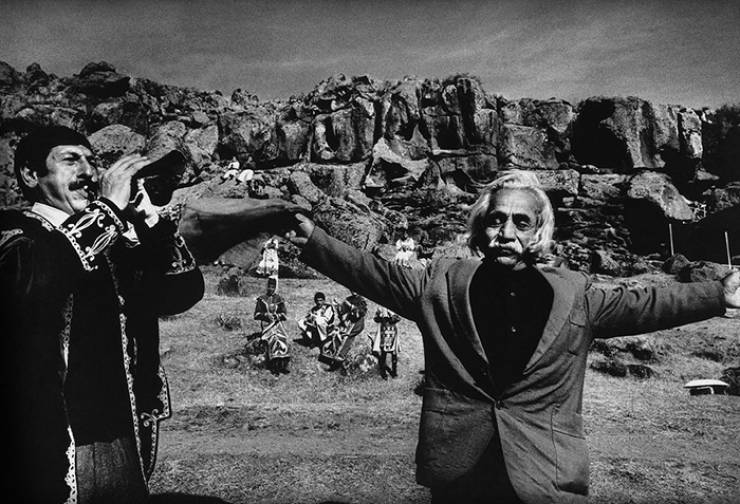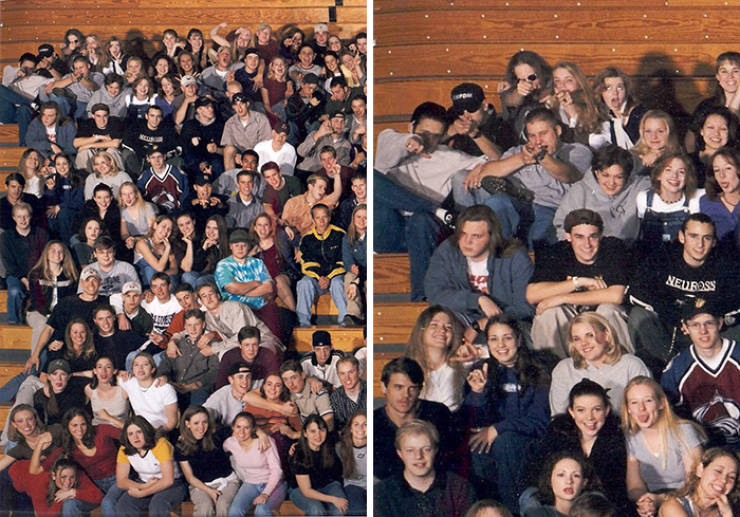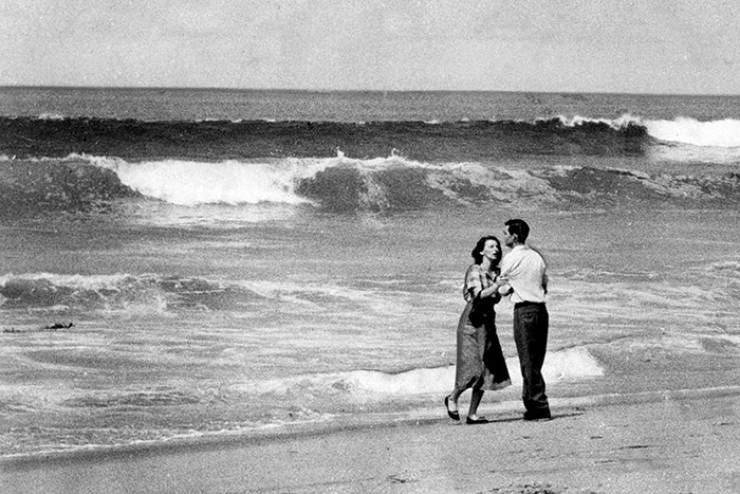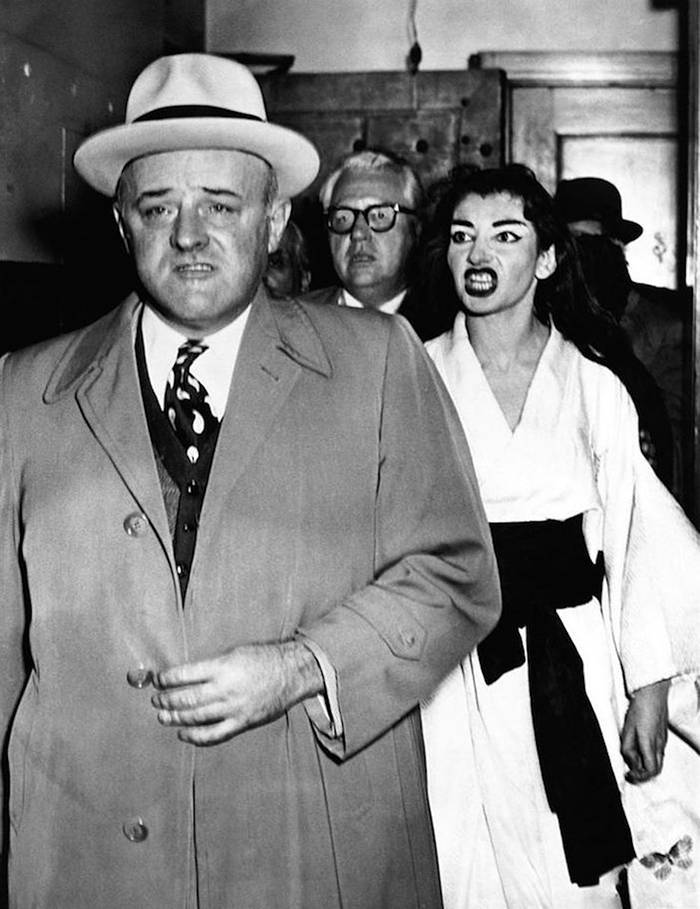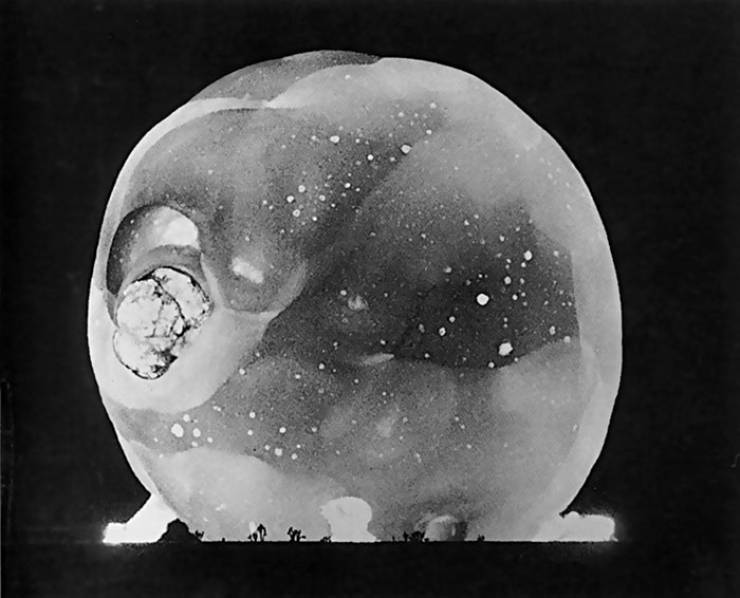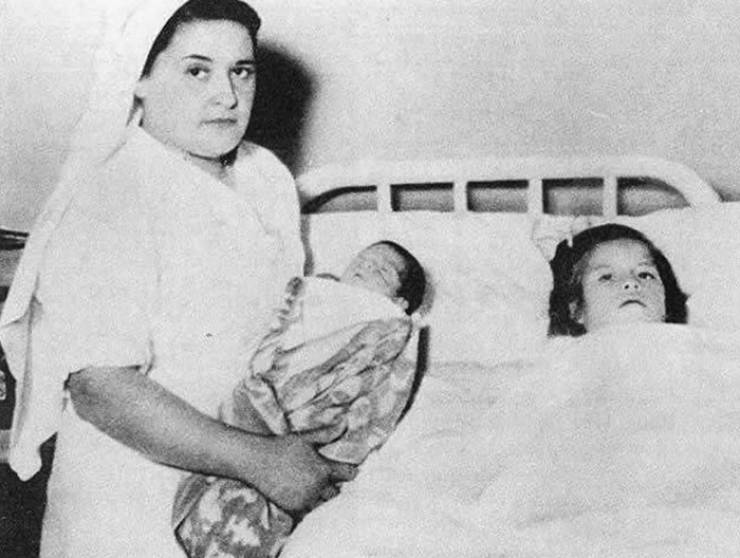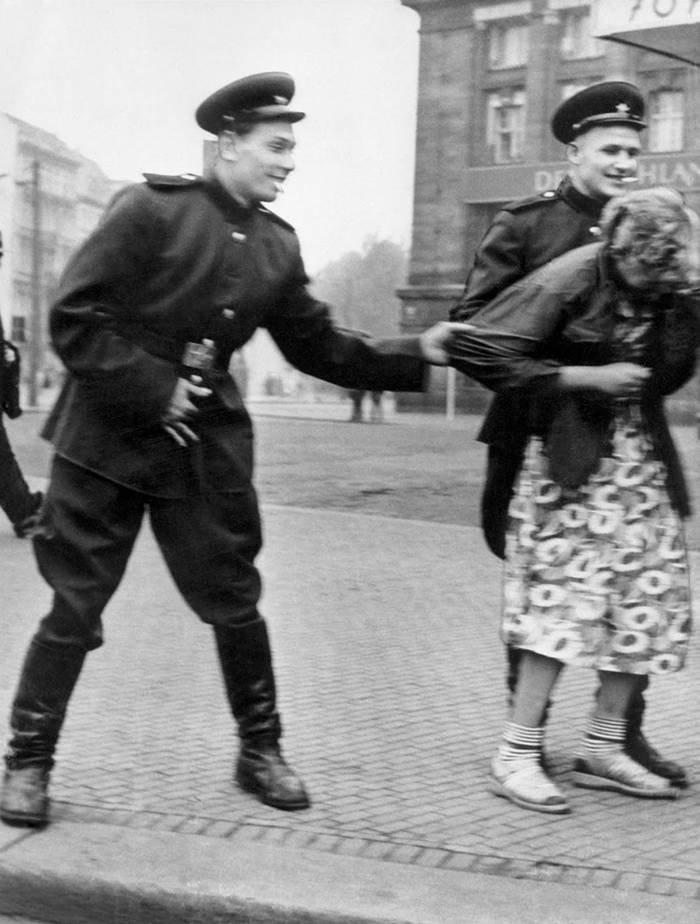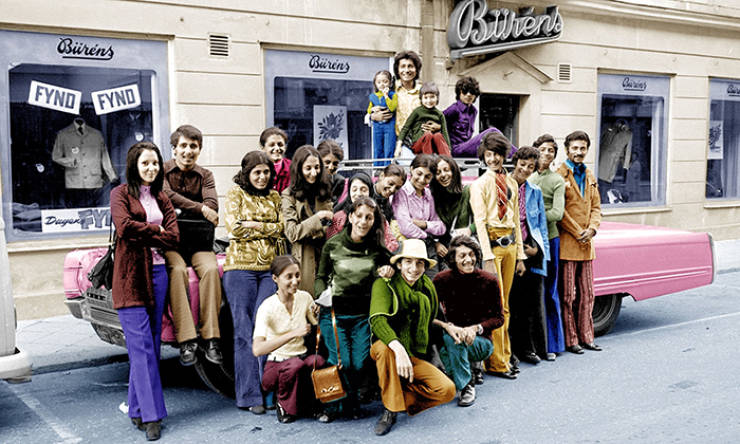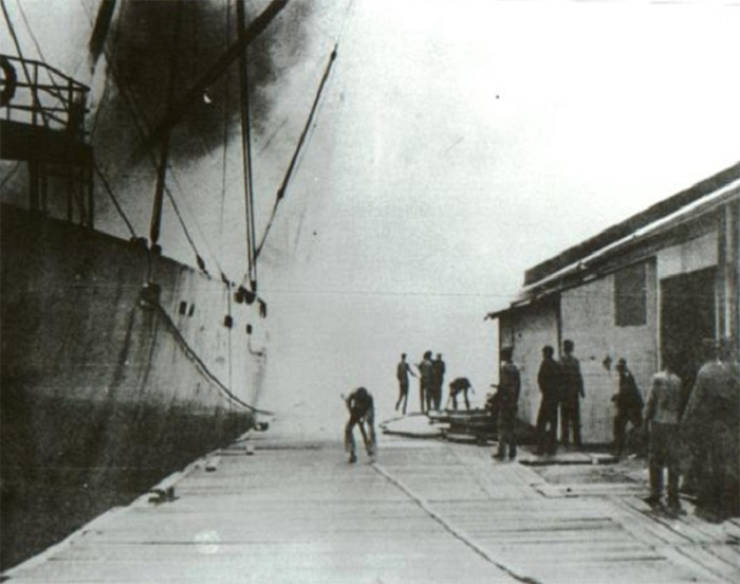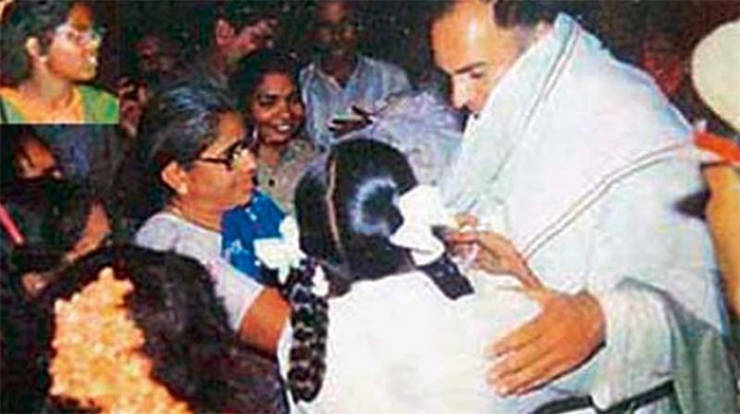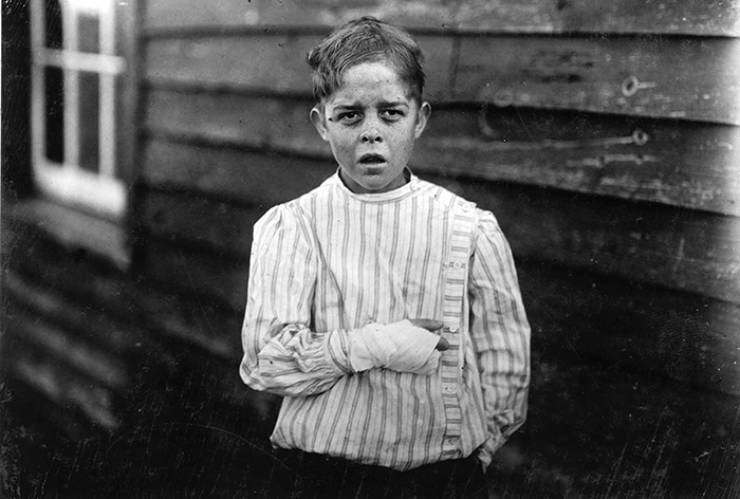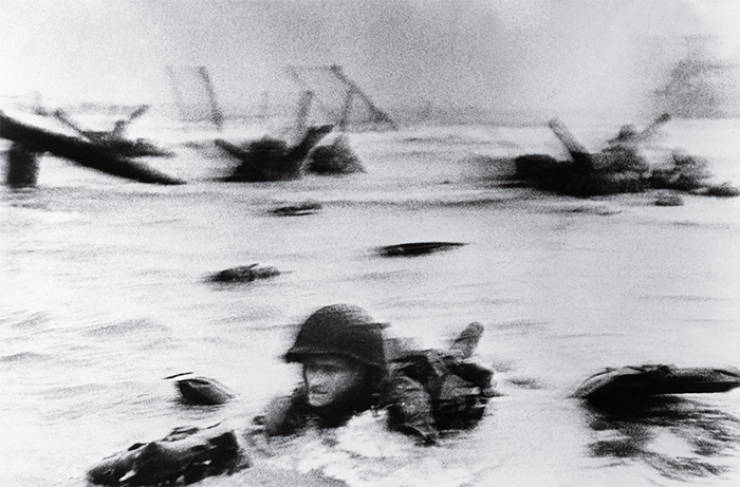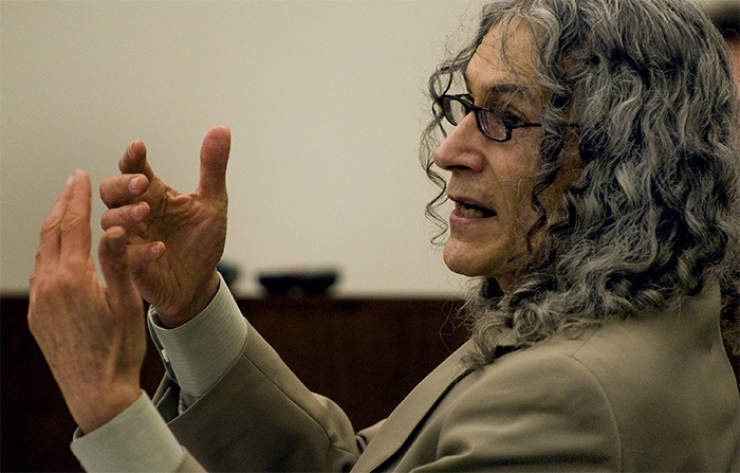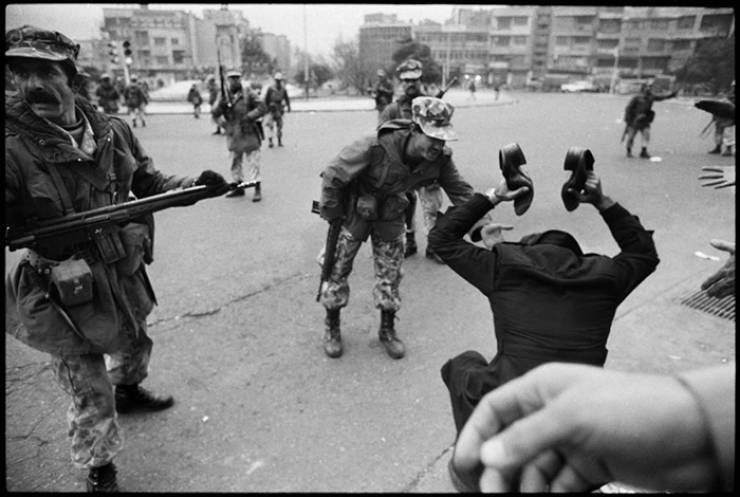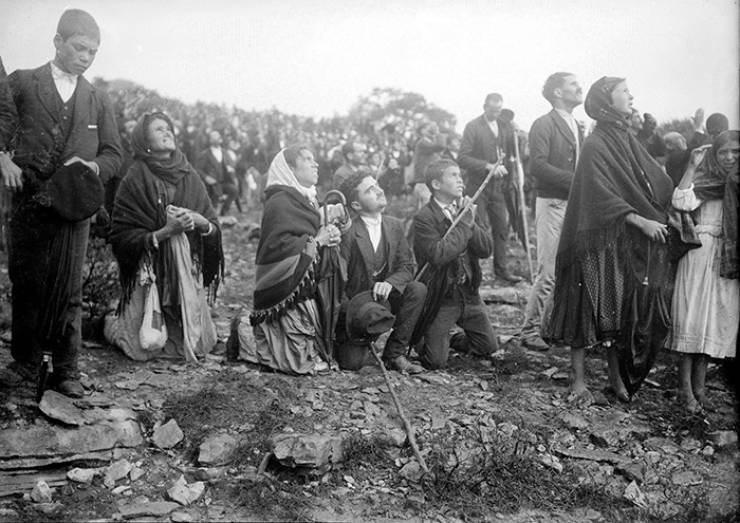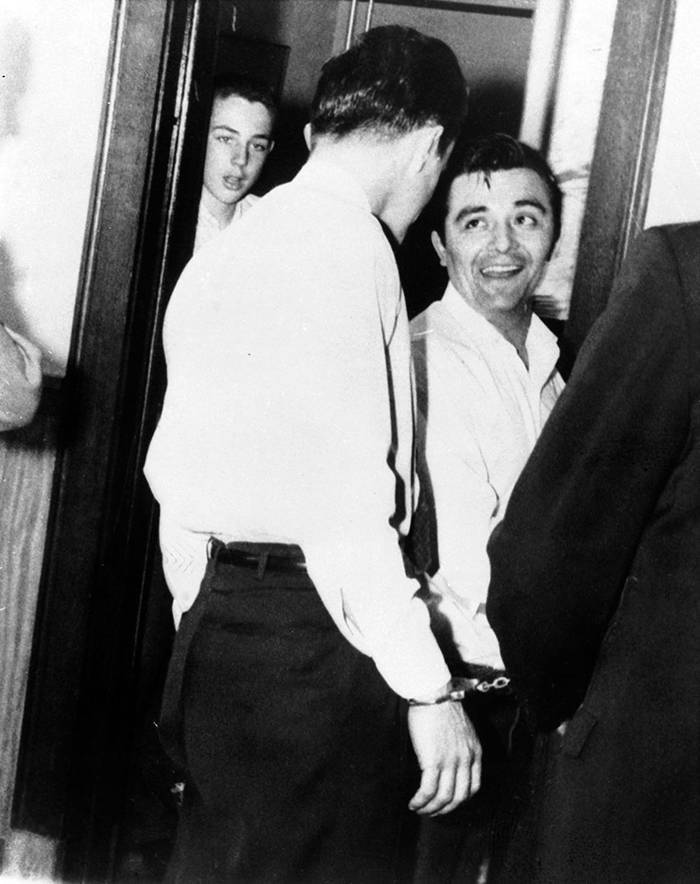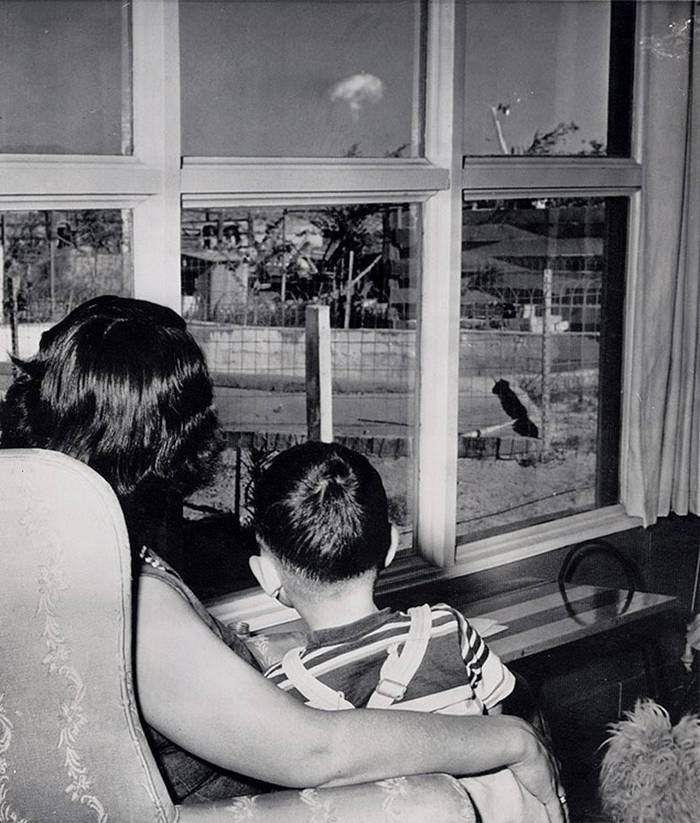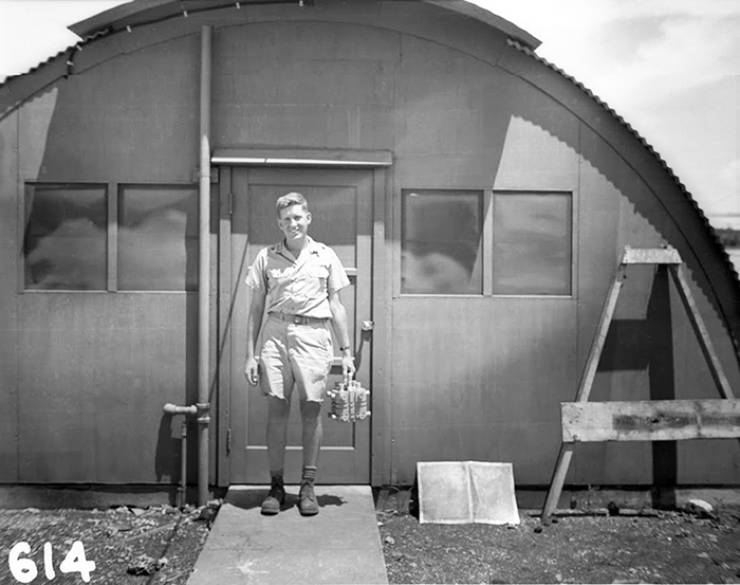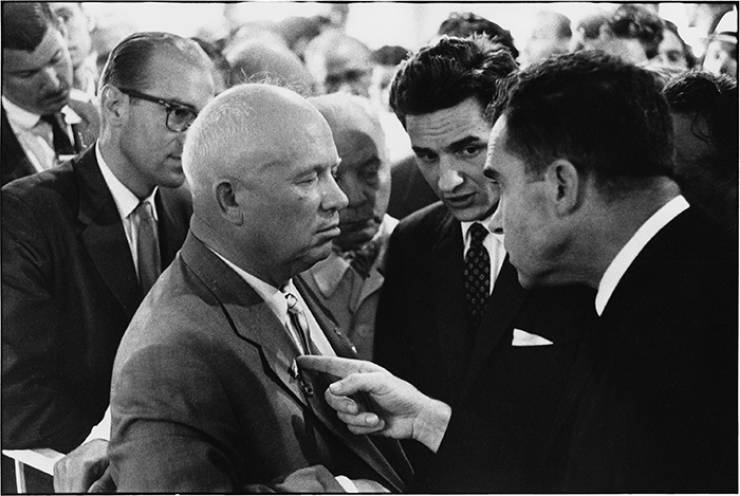Tadeusz Zitkevits Holding A Picture Of Himself
Tadeusz is holding in his hands the best picture of 1987, as chosen by National Geographic, which shows Dr. Zbigniew Religa keeping watch on his patient after performing the first heart transplant surgery in Poland, which took 23 hours. In the lower right corner, one of his colleagues who fell asleep after the surgery is seen. Even though the surgery was considered almost impossible at the time, Dr. Religa took the chance and the patient - Tadeusz Zitkevits - even out-lived his savior.
The Three Unsung Heroes Of Chernobyl
If not for these three men in the picture - Alexei Ananenko (second left) and soldiers Valeri Bezpalov (center) and Boris Baranov (far right) - millions of lives would have been lost during the catastrophe of Chernobyl. Ten days after the meltdown, the plant's water-cooling system had failed, and a pool had formed directly under the highly radioactive reactor. Without cooling, the lava-like substance could easily melt through the remaining barriers, dropping the reactor's core into the pool. If this would have happened - it might have set off steam explosions, firing radiation high and wide into the sky, spreading across parts of Europe, Asia, and Africa. In the photograph, engineer Alexei together with Valeri and Boris are fitted with protective gear after they volunteered to dive down into the waters and drain the fluid near the reactor during the Chernobyl Nuclear Disaster in Pripyat, Ukraine in 1986. The mission was successful and while the damage was still vile, the three heroes prevented what could have been a much more devastating event. Surprisingly and luckily enough, all of the three men survived.
Behind The Counter
The humiliating and fury-inducing moment was frozen in time on May 28, 1963 by Fred Blackwell, a photographer for Jackson Daily News. From left to right, at the white-only counter at a Woolworth’s five-and-dime store in Jackson, sits three protesters: John Salter, a sociology teacher and students Joan Trumpauer and Anne Moody. All three were from the Tougaloo College - a black college, which became the core of the civil rights movement in Mississippi. While sitting at the counter, the party was assaulted by an angry white mob, who were pouring ketchup, mustard and sugar on John, Joan and Anne.
'Wait For Me, Daddy'
A touching photo, captured by Claude Detloff in Vancouver as the soldiers of the Duke of Connaught’s Own Rifles marched off to fight in the World War II. The emotions seen in the parents' and child's face and their body language combine together to make it into an unforgettable image, freezing the heart-wrenching moment forever. Luckily, the father of the boy returned safe and sound in October 1945.
'Behind Closed Doors'
The couple in the picture are Elisabeth and Bengt - the photographer, Donna Ferrato, came to know them through a photo project she did on wealthy swingers. That particular night in 1982, in the suburban couple's home, the two got in a fight while Donna was taking pictures. The argument escalated quickly, and you can see in the photo Elizabeth being hit by her partner. Donna wanted to get the pictures published, but all the magazine editors contacted, refused. But the photographer knew that something has to be done and such vile actions should finally be brought into the daylight, so, in 1991 she published a book 'Living With the Enemy'. The book chronicled events of domestic violence and their aftermath. Donna's work blew the lid off the very contraversial topic at the time and thanks to her, in 1994 Congress passed the Violence Against Women Act.
Childhood Friends
Taken by Jacques Gourmelen, the photograph became one of the iconic pictures from the people of Brittany, France. On April 6, 1972 in Saint-Brieuc, workers from the company Joint Français went on strike and CRS (French riot police) intervened. In the photo, face-to-face stand two men - Guy Burmieux, a worker and Jean-Yvon Antignac, a riot policeman. As it turned out, the two had been childhood friends and recognized each other. The photographer later recalled: "I saw him [Guy Burmieux] go toward his friend and grab him by the collar. He wept with rage and told him, ‘Go ahead and hit me while you’re at it!’ The other one didn’t move a muscle."
Cher Ami
This pigeon delivered a message from a trapped battalion of soldiers in WW1 saving nearly 200 men. She was shot multiple times and ended up losing a leg and an eye. The soldiers gave the pigeon a wooden leg and gave her the name “Cher Ami” (although the pigeon was female, the French 'Ami' is of a masculine form) meaning “Dear friend”.
'Burst Of Joy'
'Burst of Joy' is another Pulitzer Prize-winning photograph. It was taken by Associated Press photographer Slava "Sal" Veder, taken on March 17, 1973 at Travis Air Force Base in California. The image depicts United States Air Force Lt Col Robert L. Stirm reuniting with his family, after spending more than five years in captivity as a prisoner of war in North Vietnam. The centerpiece of the photograph is Robert's 15-year-old daughter Lorrie, who's seen with outstretched arms and a huge smile on her face while running up to her dad. "You could feel the energy and the raw emotion in the air," the photographer recalls. The photograph went on to become a symbol of the end of US involvement in the Vietnam War.
Two Brothers
This seemingly fun and lively photo of two brothers - Michael and Sean McQuilken - was taken at Moro Rock in California’s Sequoia National Park on August 20, 1975. The photograph was captured by their sister Mary just seconds before they were struck by lightning. One of the brothers later recalled: “At the time, we thought this was humorous. I took a photo of Mary and Mary took a photo of Sean and me. I raised my right hand into the air and the ring I had on began to buzz so loudly that everyone could hear it. I found myself on the ground with the others. Sean was collapsed and huddled on his knees. Smoke was pouring from his back.” At the time, all the three survived, but Sean, the younger brother, sadly took his own life in 1989.
'Terezka’s Scrawls'
This haunting and eerie photograph was taken by David Seymour (one of the founders of Magnum Photos and one of the leading photojournalists of the 20th century) in a home for emotionally disturbed children located in Warsaw, 1948. The assignment at the center that day was to draw “home” on the blackboard. While other kids drew houses, Terezka, who grew up in a concentration camp, had a different idea of home. One can only wonder what the scribble depicts, but it seems as if the pain and the horrors endured on the camp is clearly seen in the piercing glare of Terezka.
Moving An Apartment Building To Create A Boulevard In Alba Iulia, Romania
In the early spring of 1987, in Alba Iulia, Romania, an instruction from the government was given to rework the infrastructure and make way for the boulevard - however, one apartment building stood in the way of the plan. Therefore, it was decided to split the building into two and move the parts 180 feet (55 meters) away. The building housed over eighty families and weighed over 7600 tons. The process took almost six hours to complete and the two separate parts of the building were moved apart on a 33 degree inclined angle. Stories went around that people remained in the building all throughout the moving process and one woman even put a glass of water on the edge of her balcony, which didn't spill a drop. Also, all the utilities (water, electricity, gas, etc.) remained intact, too.
Motel Manager Pouring Acid In The Water
The famous photograph, perfectly conveying the shaky times of the Civil Rights Movement in the 1960s, was taken by Horace Cort. The image shows a group of white and black young people, swimming in the pool of a Monson Motor Lodge motel on June 18, 1964 while the manager of the motel is pouring bleach on them. Seven days prior to the incident, Martin Luther King Jr was arrested for trespassing at the same Monson Motor Lodge after being asked to leave from its segregated restaurant. A group of protesters decided to fight back peacefully and decided to plan a swim-in in the pool designated for "whites only" as a form of protest. Whites, who paid for their rooms in the motel, invited black people to join them in the motel pool as their guests. Then, the motel manager, Jimmy Brock, in an effort to break up the party, poured a bottle of muriatic acid into the pool in order to scare the swimmers so that they would leave.
Children For Sale
They say a picture is worth a thousand words, and this one is probably worth even more. Life during war was extremely difficult - food and supplies were rationed, jobs were scarce. For some folks, the struggling continued even after the war. In this tragic photo, taken in 1948, four children are seen on their front stoop while their mother hides her face from the photographer in embarrassment. Lucille Chalifoux, was only 24 years old, but pregnant with her fifth child at the time. Her husband has just lost a job and the family were facing eviction from their apartment. To evade possible homelessness, the parents chose to auction off their children. All of the children were eventually bought off. Some, as rumors have spread, were forced into slavery.
'An Armenian Man Dances For His Lost Son In The Mountains Near Aparan, Armenia'
Antoine Agoudjian is a legendary French photographer of Armenian descent. As no one could describe the work of art better than the artist himself, here's Antoine's story on capturing this striking image: “In 1998, I found myself in Aparan, a large town an hour’s drive from Armenia’s capital, Yerevan. A local dance troupe was performing that evening, in the open air, with most of the suburb in attendance. As soon as I took my first shot, an old man approached me. Tears streamed down his face. He told me that his son had died. That he had been electrocuted, that he was his pride and joy, and that I looked just like him. He broke into sobs and moved towards me with outstretched arms. His name was Ishran. I asked if he would dance for me, and he began dancing. The troupe paused and perched on an outcrop of rocks in the background. It was beautiful, not because the man is beautiful, but because he represents something deep inside the collective consciousness of the Armenian community: a celebratory resilience in the face of overwhelming loss.”
Class Of 1999
At a first glance, it looks like any other high school picture – a bunch of teenagers smiling and showing silly faces. However, you can see Eric Harris, Dylan Klebold and their friends in the far left corner pointing pretend guns at the camera. Just a few weeks later after the photo was taken, Eric and Dylan would shoot 12 students and 1 teacher dead in a meticulously organised school shooting in Columbine.
'Tragedy By The Sea'
One morning on the spring of 1954, a photographer for Los Angeles Times, John Gaunt, was in the front yard of his beachfront home when he heard a neighbor shouting that, “something’s happening on the beach!” John grabbed his camera and rushed to the shore. When he arrived, he saw a couple near the water who were clutching each other. As it turned out, their 19-month-old son who had been playing in their yard had wandered off to the beach and vanished into the water. The heart-wrenching photograph appeared on the front page of Los Angeles Times and won a Pulitzer Award.
“I Will Not Be Sued! I Have The Voice Of An Angel! No Man Can Sue Me.”
On November 17, 1955, Maria Callas gave a triumphant performance in Chicago’s Civic Opera House. However, the real drama began after the opera was over. U.S. Marshal Stanley Pringle and Deputy Sheriff Dan Smith burst into Callas’s dressing room and served her with court summons for a breach of contract. Maria was furious: “I will not be sued! I have the voice of an angel! No man can sue me,” she yelled. The photograph perfectly conveys the intensity of the moment at the time and after the image made its way to the press, Maria Callas was dubbed "The Tigress". After the incident, the great diva of the Opera vowed to never return to the Windy City again.
'flight Of Refugees Across Wrecked Bridge In Korea'
Taken on December 4, 1950 by an Associate Press photographer Max Desfor, the photograph shows desperate refugees crammed on a destroyed Pyongyang bridge, over the Taedong River in North Korea as they were rushing to flee their war-torn country. The Chinese communist troops were approaching rapidly, so the residents, in fear of their lives, decided to escape to the Southern part of the country. The photograph won Pulitzer Prize for Max Desfor, back in 1951.
Atomic Bomb Detonation
Harold Edgerton - an MIT physicist and a photographer - is best known for his invention of strobe light photography, allowing us to freeze fast actions in time, as in the famous picture of a bullet piercing an apple. In the beginning of 1947, Harold's research firm was commissioned to photograph atomic bomb tests in Nevada and the Pacific. This particular photograph was taken on June 5, 1952, as part of Operation Tumbler-Snapper test series at the Nevada Proving Grounds with a shutter speed of one hundred millionth of a second.
The Youngest Mother
When she was just 5-years-old, Lina Medina (born on 23 September, 1933) was brought by her parents to a hospital, who complained of extreme abdominal growth. After being examined by a doctor, a shocking truth was discovered - Lina was seven-months pregnant. Apparently, Lina was born with a rare condition called 'precocious puberty', which, simply put, is the early onset of sexual development. Lina Medina then officially became the youngest documented mother in medical history. She gave birth to a boy on May 14, 1939, by a cesarean section, as her pelvis was too small. The child born was completely healthy and was named Gerardo. However, the father of the child remained a mystery.
Soviet Soldiers Harassing A German Woman
Although the photograph speaks for itself, context is still necessary in order to understand all the circumstances surrounding it and the gravity of it. In the image captured, a woman is seen to be openly harassed by two Soviet soldiers, near the West Hall section of the Leipzig Hauptbahnhof central railway terminus. Sadly, it was not an isolated incident - the mass rapes took place in the occupied German territory during and after the war. The act of rape, as per historians, is oftentimes used to emphasize the victory. While most historians agree that such vile acts were commited not only by the Soviets, it was estimated that a staggering amount of 2 million German women suffered from the hands of communists, some as many as 60 to 70 times.
Young Osama
This is a photograph of a nice and large family vacationing in Sweden, in 1971. However, second from the left, in a brown shirt, you can see a 14-year-old boy named Osama. Some years later, the name Osama bin Laden is going to be associated with terror and a murderous pan-Islamic militant organization Al-Qaeda.
SS Grandcamp
Looks like an ordinary ship at an ordinary dock on an ordinary day. However, the moment captured is April 16, 1947 and the ship is called SS Grandcamp. A fire has broke out and the men on the dock are members of the Texas City Volunteer Fire Department, attempting to extinguish it. A few minutes after this photo was taken, it’s going to detonate in one of the largest non-nuclear explosions in human history. 468 people had died, more than 5,000 were injured.
'Leap Into Freedom'
Following World War II, the city of Berlin was carved into four occupation zones. The life conditions on each part were not equal and during the period from 1949 to 1961, around 2.5 million people from East Germany had fled the Soviet section of Berlin. The Soviets were concerned and the East German leader Walter Ulbricht, in order to stop the flow, had barbed-wire-and-cinder-block barriers thrown up in early August 1961. In the photo, the primary subject is 19-year-old border guard Hans Conrad Schumann, crossing the barrier. The West Berlin crowd were enticing Hans to come on over and he himself has then said, that he does not want to “live enclosed,” and suddenly jumped the barbed wire. The photo quickly made its way to the press and the iconic image of Hans leaping over the barrier became a symbol of freedom. The young soldier went on to live quietly in the West, however, Hans himself did not deal well with the newly-found fame and his status of an icon and, sadly, committed suicide in 1998.
Rajiv Gandhi
This is the last photo taken of Indian Prime Minister Rajiv Gandhi. It was captured moments before a suicide bomber, (wearing orange flowers, lower left, also on the inset, top left) hugged him and detonated her bomb. The photographer was also killed during the attack.
An Injured Young Mill Worker
The image captured on October, 1912, shows Giles Edmund Newsom who was injured while working in Sanders Spinning Mill in Bessemer City, North Carolina earlier that year. A piece of machinery fell on his foot and smashed his toe, which caused him to fall onto a spinning machine which crushed and tore out two of his fingers. He was 11-years-old at the time. Both Giles and his younger brother worked in the mill several months before the accident. After the boys' father found out that the company was to pay out money for Giles and not the parents, he tried to compromise, while their mother blamed the boys that they got their jobs on their own. The aunt is documented to have said: “Now he’s jes got to where he could be of some help to his ma, an’ then this happens and he can’t never work no more like he oughter.”
'D-Day'
The photo, taken by the legendary LIFE photographer Robert Capa, captured the hellish events of 6 June, 1944 - on this day the Allies invaded Normandy, marking it as the largest seaborne invasion in history. The main subject of the photo is Private First Class Huston Riley, a 22-year-old soldier, who was struck several times by bullets. The photographer together with a sergeant, helped Huston, who later recalled thinking: “What the hell is this guy doing here? I can’t believe it. Here’s a cameraman on the shore.” Robert, the photographer, spent about an hour and a half under fire as men around him died. Only a few of the frames from the film remained, they were all grainy and blurry. However, the shaky and unstable photographs brought a jarred and disturbing feeling to the viewer, helping to transcend the infernal moment of World War II.
Rodney Alcala
A photograph of Rodney Alcala in court cross examining himself. The man was a serial killer known as the 'dating game killer' who killed women back in the 1970’s. He got the name as he was a guest on one dating game show. He represented himself back in 2010. He would cross examine himself and would change his voice in the process as if it’s a different person. He was sentenced to death.
Argument
Photographed by Abbas - a French-Iranian photographer - in Tehran, Iran, 1978, the heart-wrenching image shows a rioter holding the shoes of a dead friend. His comrade was shot after the military opened fire on a crowd. The soldier argues with a man that it was not his unit which opened fire. The capture is from Abbas' book 'Iran Diary: 1971– 2002'.
Miracle Of The Sun
In 1917, three Portuguese shepherd children had claimed to see a prophecy that the Virgin Mary (referred to as Our Lady of Fátima), would appear and perform miracles on Sunday 13 October in 1917. Somewhere between 30,000 to 100,000 had gathered near Fatima town to watch extraordinary solar activity that, according to testimonies, lasted around 10 minutes. People reported having seen the Sun appearing to "dance" in the sky or emit multicolored light and strange, bright colors. The strange event was officially declared a miracle by the Roman Catholic Church in 1930.
'Munich Massacre'
Kurt Strumpf's haunting image was taken at the 1972 Olympic Games, in Munich, Germany. The Germans wanted a peaceful and joyful games which would outweigh the last 1936 Games in Germany, held when Hitler was in power. To encourage the feeling of harmony and kinship, the security was lax, which later proved to be a mistake. On September 5, eight members of the Palestinian terrorist group Black September raided the Munich Olympic Village building housing Israeli Olympians. The terrorists managed to kill two team members, took nine as their hostages and demanded the release of 234 jailed Palestinians. The standoff lasted 21 hours and it was the first live stream of terrorism, which was watched by approximately 900 million people. During the siege, one of the terrorists walked out into the apartment's balcony - thats when Associated Press photographer Kurt Strumpf captured the moment of the faceless horror, reminding people that the evil never sleeps.
"The Last Laugh?"
The photo is of Richard Hickock and Perry Smith, two murderers, after hearing that they've been sentenced to death. The two killers murdered a family of four, including two children, after planning to rob them, but failing to find anything worth stealing except for mere $50. The seemingly casual and unconcerned smile on Perry's face brings an eerie atmosphere into the photograph, which, without the context, looks rather mundane.
Mom And Son Watching The Mushroom Cloud After An Atomic Test, Las Vegas, 1953
Back in the 1950s the US, having already dropped two nuclear bombs, continued testing the deadly weapons of massive destruction in the Nevada desert. The photograph shows Jacqueline Buck and her son, who were residents of Las Vegas, Nevada, watching a mushroom cloud from their living room window. The tests were taking place merely 75 miles away from their house.
The image, taken in 1945, shows physicist Harold Agnew of the Manhattan Project - a research group of US, UK and Canadian scientists formed to construct a nuclear weapon during World War II. In the photo, Harold is gleefully holding the plutonium core of the 'Fat Man' - one of the world's most deadly weapons, a 14 pound mechanism responsible for 80,000 deaths. The heart of the 'Fat Man' atomic bomb was detonated over the Japanese city of Nagasaki on August 9, 1945. Three days after US deployed the nuclear bomb, Japan surrendered to Allied forces thus ending World War II.
'The Kitchen Debate'
It is safe to say that this captured moment of an impromptu discussion between the two global leaders - Soviet Premier Nikita Khrushchev and U.S .Vice President Richard Nixon - has changed the course of history. Taken by Elliott Erwitt and seen by millions, the photograph divided the public in two and, some believe, may have even swayed votes. The discussion occured in 1959 during a National Exhibition curated by US in Moscow's Sokolniki Park. The exhibition was intended to display the benefits of a capitalist society. During a tour of the displays, a discussion broke out between the two heads of states on Communism versus Capitalism. As the majority of the conversation took place near a model American kitchen, the famous captured dialogue has become known as the "Kitchen Debates."

